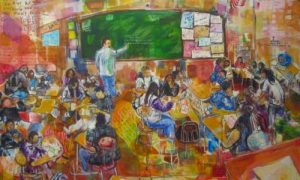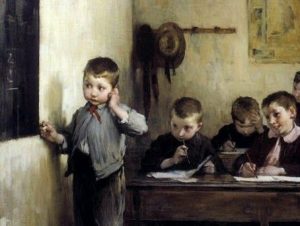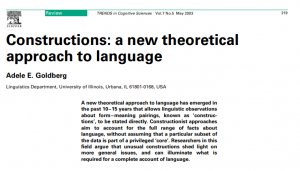PDF #6 – Davis, Ernest – Embodied Simulation as a Theory of Language
When someone hears or reads a sentence, he is likely to visualize the scenario described. And, perhaps more surprisingly, to activate parts of the brain that control muscles associated with actions that are mentioned or implicit in the text. For instance, if you read a description of a polar bear hunting a seal, you are likely to visualize the bear and the seal on an icy seashore. If you read the sentence, “John turned the key in the ignition” or “John screwed off the gas cap”, the part of the brain that controls motion of the hand is activated. Remarkably, after reading the first sentence, an experimental subject finds it easier to turn their hand clockwise than counterclockwise; the reverse is true after reading the second sentence. This kind of visualization and activation of motor control is known as “embodied simulation”.

In the last two decades, there have been many psychological studies. And some neuroscientific studies of embodied simulation, examining many different aspects of the phenomena. For example, if a reader reads a story about someone driving a car, under what circumstances does he visualize the
story from the point of view of the driver, looking at the steering wheel, as opposed to visualizing an image of the driver as seen from the side? When do simulations constructed in reaction to hearing a sentence make it easier to do some other task and when do they interfere with the other tasks? What parts of the brain are involved in a simulation? What kinds of individual differences do people exhibit in constructing and using simulation?
After reading “Embodied Simulation as a Theory of Language” you can check important issues for ESL teachers on the section PDFs and visit my channel by YouTube.








